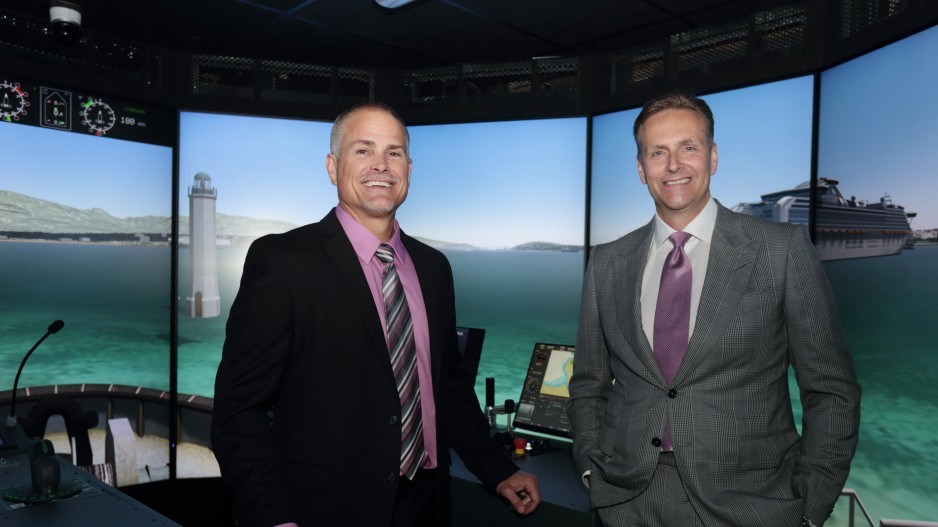Seaspan Marine Transportation unveiled a new marine simulator facility, the first and only of its kind in North America, in its North Vancouver office on July 4. The simulator, which required an investment of approximately $1.5 million dollars, is described by the company as the “cornerstone” of a $6.5-million, multi-year safety and training program.
“You might think that a grand opening of a marine simulator facility is all about an investment in technology. But for us here at Seaspan, it’s all about an investment in people. Acquiring or building modern modern vessels with the latest technology is only part of the solution, and quite frankly it’s the easy part,” said Frank Butzelaar, CEO of Seaspan Marine, during the facility’s official unveiling.
The new facility contains two fully-enclosed marine simulators, featuring 17 computers and 12 displays that provide a floor-to-ceiling, 360-degree visual experience that immerses trainees in real-world scenarios to prepare them to handle Seaspan’s fleet of over 30 tugboats.
Trainees are expected to complete 10 days of work with the simulators and an additional 6 days of on-board training, concluding with a class certification that must be maintained via regular review sessions.
The training program was jointly developed with SeaWays Global. Seaspan announced a 5-year, multi-million dollar partnership with SeaWays, a UK-based provider of marine training and tugboat simulations, in May 2018.
“This new training program will ensure Seaspan mariners are the most highly trained mariners in North America,” Butzelaar said.
“Ensuring safety in Canada’s largest port is no small task. Safety and security of work requires proactive measures from everybody who operates on the port, and I’m pleased to see Seaspan taking this role,” said Peter Xotta, vice president of planning and operations at the Vancouver Fraser Port Authority, during the event.




